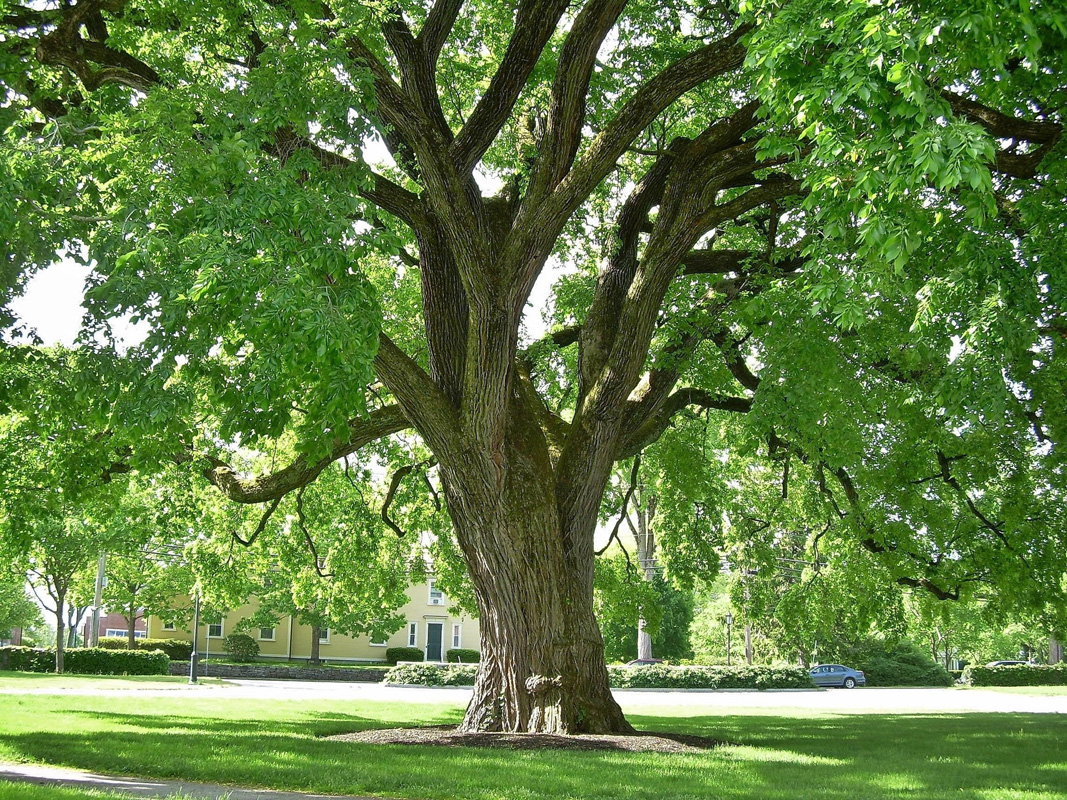It’s pretty, it’s purple and it’s a flower — it’s none other than the beautiful purple heart plant you see in magazines or in your neighbor’s coveted backyard.
As its name implies, this plant is known for its purple and pink leaves and flowers. Despite its gorgeous blooms, many gardeners love the purple heart plant for its foliage, which is vibrant. The purple heart’s leaves and stems appear to be deep royal purple, but also has lighter shades of turquoise-gray. These beautiful shades become darker as the purple heart plant ages.
Considered an easy-to-grow plant, this purple leaf plant adds a pop of color to any garden year after year (as long as you have the right tools and plenty of patience). So if you’re looking to brighten up your garden, here’s what you need to know about the purple heart plant.
Purple Heart Plant History

Purple Heart plants are native to Mexico and Central America and grow as wild ground cover plants. These plants are characterized by their long, pointed leaves that are a deep shade of purple. They are also known for quickly spreading and covering large areas, making them a popular choice for landscaping projects.
There are several species of purple heart plants, including the common purple heart (Tradescantia pallida), the white-flowered purple heart (Tradescantia pallida ‘Alba’), and the dwarf purple heart (Tradescantia pallida ‘Purpurea Nana’). These species are distributed around the world, with the common purple heart plant being found in tropical and subtropical regions of the Americas, Africa, and Asia.
In terms of appearance and growth patterns, purple heart plants are often compared to other ground cover plants like creeping phlox and creeping thyme. However, purple heart plants are more upright in their growth habit and have a bolder color palette than these other plants.
Recent research on purple heart plants has focused on their genetics and evolution. One study published in the journal Plant Systematics and Evolution examined the genetic diversity of purple heart plants in their native range and found at least three distinct lineages of the species. This research could help inform future conservation efforts for these plants and shed light on their evolutionary history.
Purple Heart Plant Varieties
There are several varieties of purple heart plants that offer unique features and characteristics. These plants are popular for their vibrant purple foliage, low maintenance, and ability to thrive in various growing conditions. Some of the most popular purple heart plant cultivars include:
Tradescantia pallida ‘Purpurea’
This variety is known for its deep purple leaves and its ability to tolerate the full sun. It is a fast-growing plant that can quickly spread and cover large areas.
Tradescantia pallida ‘Pale Puma’
This cultivar has light green leaves with purple undersides. It is a slower-growing plant that is more compact than other varieties.
Tradescantia pallida ‘Variegata’
This variety has green and white variegated leaves with hints of purple. It is a striking plant that adds a unique touch of color to any landscape.
When comparing purple heart plant varieties, it is crucial to consider their color, size, and growth habits. Some varieties, like Tradescantia pallida ‘Purpurea’, have a more intense purple color and can grow quite large. In contrast, others, like Tradescantia pallida ‘Pale Puma’, have a more subtle color and a minor growth habit.
Recent developments in purple heart plant breeding and hybridization have led to new cultivars with even more unique features. For example, there are now purple heart plants with variegated leaves and plants with more prominent or compact growth habits. These developments offer even more options for those looking to incorporate this vibrant plant into their landscape design.
What is the Purple Heart Plant?
The purple heart plant (Tradescantia pallid) — also called the purple queen or purple secretia — is a rapid-growing member of the spiderwort family known for its beautiful purple leaves and stems. This plant produces purple and pink flowers, though, as mentioned above, the foliage is more attention-grabbing than the flowers.
This purple flower bush is known for being versatile. Its plants work well as ground cover, adding color to any landscape. It also functions as a trailing border around enclosed garden spaces. Even if you hang it in a basket or plant it in a pot on your patio, this flower will thrive.
The purple heart plant is native to Mexico. Originally, its scientific name was Setcreasea pallida. Later, scientists reclassified the plant under the genus Tradescantia.
What is the Purple Heart Plant Good For?
Apart from sprucing up gardens, the purple heart plant can be used as a houseplant, a trailer in mixed containers or as ground cover. These purple perennial flowers are also best used in masses for in-ground plantings since it quickly spreads.
Its purple leaves also offer a nice contrast to variegated, chartreuse or gold foliage, as well as a great complement to burgundy, light purple or pink blossoms on other plants. For bolder combinations in your garden, pair your purple heart plant with red begonias, orange marigolds or chartreuse coleus.
Other suggestions for harmonious flower combinations with purple or pink-flowered plants include the Mexican petunia, vinca, scaveola, lantana and four o’ clocks.
How to Grow a Purple Heart Plant
The beautiful purple queen plant grows all-year-round, especially when planted outside in USDA hardiness zones 7 to 11. During the winter season, the freezing temperatures could negatively impact the purple heart plant, but its roots will live. Come early spring, the new purple stems will appear.
The first consideration when planting a purple heart plant is the location. Plant your purple flowers in a place with the sun to encourage the growth of foliage. This purple leaf plant will still thrive in areas with partial shade, but the foliage will appear greener with a few touches of purple.
How Do You Take Care of a Purple Heart Plant?
The purple heart plant is a creeping perennial flower since it spreads out quickly. It can grow up to 14 inches tall and 16 inches wide.
If you want to add these purple flowers to your garden, keep in mind that purple heart plants form dense groundcovers, which can prevent the establishment and germination of other plants. However, the purple plant adds tropical and lush ground cover texture to any garden.
To achieve your desired results, pay special attention to the following factors:
Soil
Purple heart plants thrive in porous, moist and lightweight soil. Though most commercial potting mixes are OK to use, the ideal soil to use should include compost, perlite and peat moss.
When planting your purple queen plant, make sure that the bottom of the container has drainage holes, especially if you are planting indoors. Too much water in the soil can cause the roots to rot.
Light
Planting your purple flowers under direct sunlight ensures they grow vibrant purple stems and blossoms. As mentioned above, they can still thrive under partial shade, but the stem will appear more green than purple.
Introduce your purple heart plant to brighter conditions over time. However, too much sunlight can burn the foliage so monitor their time under the sun.
Fertilizer
In general, the purple heart plant doesn’t need fertilizer, although it’s OK to fertilize it. Always dilute the solution to about half of the fertilizer’s regular strength.
Water
The purple queen plant is a drought-tolerant plant; it doesn’t require too much water. However, avoid letting the plant sit dry for a long time. Water your purple plant when its topsoil feels dry to the touch. You can also water during the blooming season.
Also, younger plants need more moisture than older purple heart plants. Water the younger ones at least once a week.
Humidity and Temperature
The purple queen plant can survive under different climates, but it can freeze easily. To create an ideal growing condition for your plant, maintain an average humidity of 40 to 50 percent. If your house has dry air, invest in a humidifier. If you don’t have any room in your budget for a humidifier, place your purple heart plant in the kitchen or bathroom.
Common Diseases and Pests
The purple heart plant is a tough plant that attracts only snails and caterpillars, especially when planted outdoors. Still, it pays to protect your purple plants. Place a layer of diatomaceous earth, wood chips or gravel to protect the plants from unwanted critters.
Purple Heart Companion Plants
When selecting plants to grow alongside purple heart plants, it is crucial to consider their growing habits and the conditions they require. Some plants make excellent companions for purple heart plants, providing visual interest and complementary features while helping to enhance the health and overall aesthetic of the landscape. Common companion plants for purple heart plants include:
Lantana
This plant is known for its colorful flowers and its ability to attract pollinators. It can be grown alongside purple heart plants to add a pop of color and texture to the landscape.
Vinca
This low-growing plant has glossy green leaves and bright, star-shaped flowers. It is a good choice for planting alongside purple heart plants, as it complements the plant’s deep purple color.
Petunias
These popular annuals come in various colors and can be planted alongside purple heart plants to add variety and interest to the landscape.
Using companion plants alongside purple heart plants can help improve soil health, reduce pests and disease, and provide visual interest throughout the growing season. When selecting companion plants, choosing plants with similar growing requirements to the purple heart plant, such as full sun or partial shade, is essential.
Caring for companion plants requires adequate water, nutrients, and sunlight. Monitor the soil moisture level, adjust watering as needed, and fertilize regularly to ensure healthy growth. Additionally, it is important to prune and deadhead companion plants regularly to promote continuous blooming and prevent disease. With proper care, companion plants can help create a beautiful and thriving landscape alongside purple heart plants.
Benefits Of Growing Purple Heart Plant At Home
Growing purple heart plants at home can provide numerous benefits, both in terms of their properties and their versatility in landscaping. These plants are known for their striking deep purple color, ease of care, and drought tolerance.
Common uses of purple heart plants in home and garden landscaping include ground covers, hanging baskets, and container gardens. They can also be used to create a beautiful border or edging for flower beds or walkways. Compared to other ornamental plants, purple heart plants require minimal care and are resistant to pests and diseases. They are also more drought-tolerant than many other plants, making them an ideal choice for those living in arid or drought-prone areas.
In addition to their aesthetic and functional benefits, purple heart plants also attract pollinators such as bees and butterflies. This can help promote a healthy and diverse ecosystem in the garden. Furthermore, their dense root systems help to reduce soil erosion and prevent soil compaction.
Purple heart plants are also easy to propagate, meaning that they can be quickly and easily grown from cuttings. This makes them a cost-effective and sustainable choice for home gardeners. Overall, the many benefits of purple heart plants make them an attractive and practical addition to any home garden.
Purple Heart FAQs
1) How Do You Prune Your Purple Heart Plant?
These purple houseplants grow long stems. Due to their incredibly rapid growth rate, they can become spindly and leggy quickly. As the plant grows, pinch off the stem tips to encourage fuller plant growth instead of letting the stems become spindly.
Also, prune your plants during the warmer months, when all of the flowers have bloomed. Use gloves and sharp scissors. When you prune, cut the top half of the stems that are overgrown.
2) How Do You Pot and Repot Your Purple Heart Plant?
Since the purple heart plant doesn’t grow too large sizes, you can keep it as a houseplant. It doesn’t require regular repotting but you must transfer them to a new container to let the roots push through the drainage holes.
Repot your plants during the spring season since purple heart plants spread out during this season.
3) How Do You Propagate Your Purple Heart Plant?
The purple queen plant can be propagated best by transplanting, stem cutting and division. Take a cutting from any part of the plant and add the node in the water or into the moist potting mix before you transplant the plant to the planter or ground.
4) Do purple heart plants spread?
Yes, purple heart plants can spread and grow quickly. Like a Poplar tree, they can be invasive in some areas, so it is vital to monitor their growth and prune them regularly to prevent them from taking over other plants in the garden.
5) How do you take care of a potted purple heart?
To take care of a potted purple heart, place it in a location with bright, indirect light and well-draining soil. Water it thoroughly when the soil feels dry to the touch, and fertilize monthly during the growing season.
6) Can you grow a purple heart as a houseplant?
Yes, purple heart plants can be grown as houseplants. They prefer bright, indirect light and well-draining soil. Water when the soil feels dry to the touch, and fertilize monthly during the growing season. Prune as needed to control size and shape.
7) Do purple heart plants grow round the year?
Purple heart plants can grow year-round in warm and humid climates. But unlike cedar trees, they may go dormant during the winter months. However, they can often be kept alive and healthy through the winter with proper care and protection.






